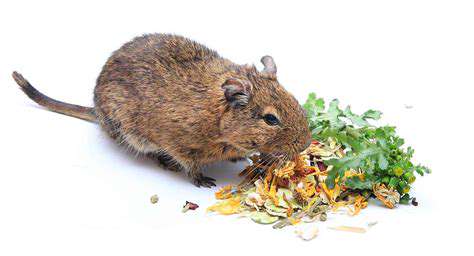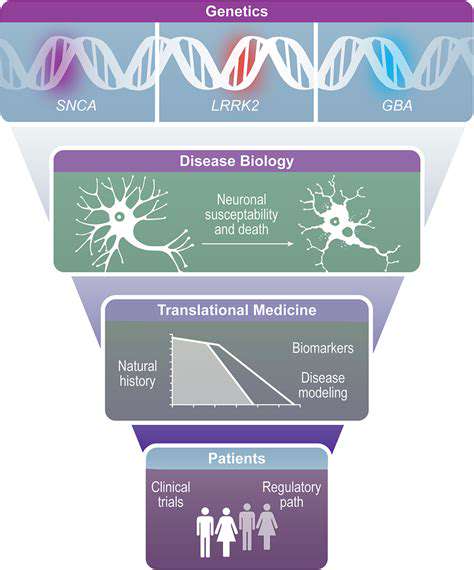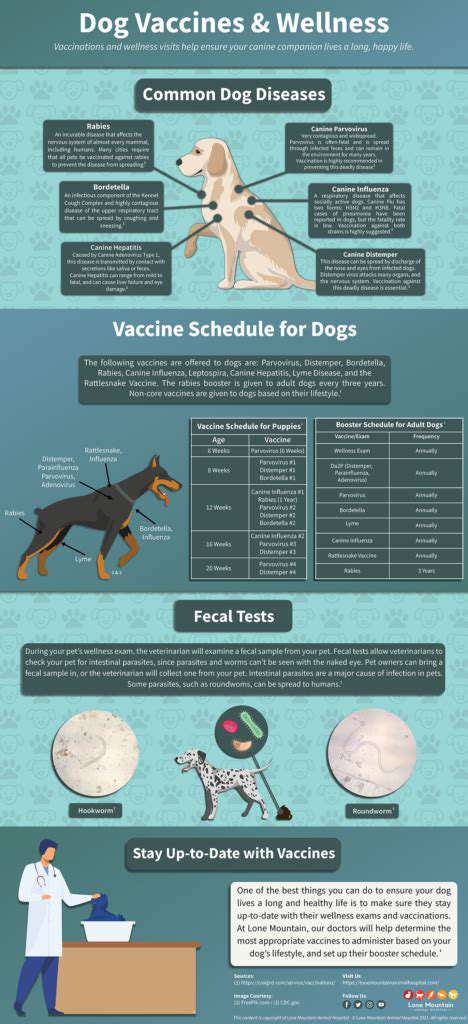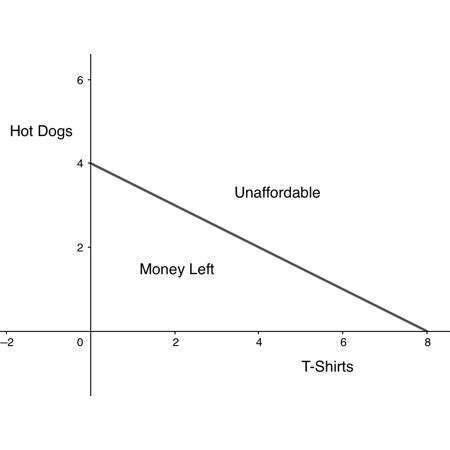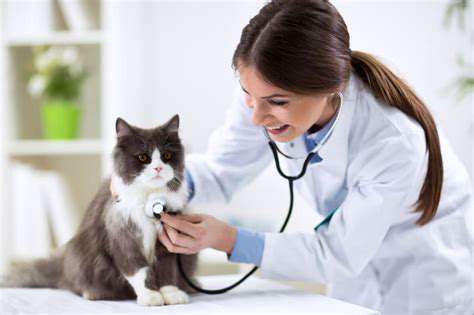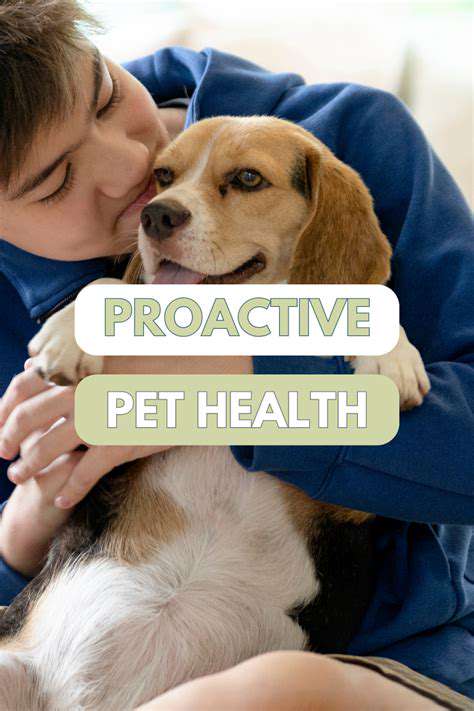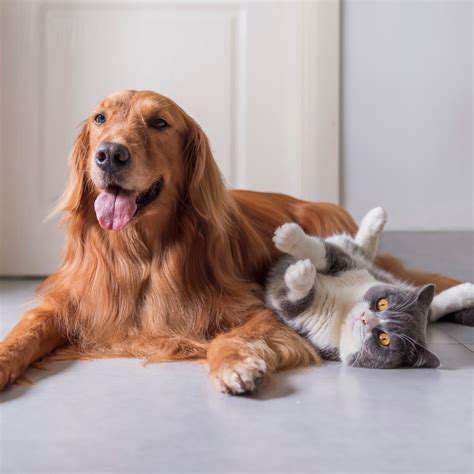Recognizing the Signs of Pet Illness: Early Detection
Behavioral Changes: A Window into Your Pet's Health
Understanding Subtle Shifts in Behavior
Changes in your pet's behavior can be subtle, yet highly indicative of underlying health issues. A previously playful dog who suddenly prefers solitude might be experiencing pain or discomfort. Observing these nuanced alterations, like a shift in eating habits, sleeping patterns, or even a change in vocalizations, is crucial for early detection of potential problems. Pay close attention to any deviations from your pet's typical behavior, no matter how minor they may seem.
Similarly, a cat that used to love chasing toys but now avoids interaction might be experiencing a neurological issue or a painful condition. Be mindful of any new anxieties, fears, or avoidance behaviors. These subtle shifts in personality and routine can be very important clues to their overall health.
Changes in Appetite and Elimination
A significant change in appetite, whether an increase or decrease, can signal various health concerns. If your pet suddenly stops eating or experiences a drastic reduction in their food intake, it could be a symptom of illness, pain, dental problems, or gastrointestinal issues. Similarly, an increase in appetite could indicate hyperthyroidism or other metabolic disorders. Detailed observation of food consumption and noting any unusual odours or changes in bowel habits or urine output are critical.
Similarly, changes in elimination patterns, such as increased frequency, straining, or the presence of blood in stool or urine, are indicators that warrant immediate veterinary attention. Consistency and frequency are key to pinpointing potential issues. These observations are crucial in identifying urinary tract infections, digestive problems, or even more serious conditions.
Alterations in Mobility and Energy Levels
Noticeable changes in your pet's mobility, such as limping, difficulty getting up or down, or reluctance to exercise, could signify pain, arthritis, injuries, or other musculoskeletal issues. A previously energetic dog who now prefers to rest or a cat that struggles to climb or jump could be experiencing significant discomfort. Monitoring these physical changes, combined with observing changes in their activity levels, can help detect potential problems early.
Changes in Grooming and Self-Care
Changes in grooming habits can also indicate underlying health issues. A dog that stops grooming themselves or a cat that has difficulty cleaning themselves could be experiencing pain in their joints or mouth, skin issues, or neurological problems. A dog that is excessively licking a particular area could also be a sign of discomfort. Observing changes in their grooming rituals, as well as any visible skin lesions or hair loss, is essential for recognizing potential health concerns. Regular inspection of your pet's coat and skin for any unusual changes is important.
A successful flight search hinges on a deep understanding of the various factors that influence air travel. This includes not only the destination and dates but also crucial elements like budget constraints, preferred airline, and even potential layover options. A well-defined search strategy is essential for maximizing your chances of finding the best deal. Thorough research and careful consideration of your needs are paramount to a smooth and satisfying journey.
Physical Symptoms: Obvious Indicators of Discomfort
Physical Symptoms: Obvious Indicators of Discomfort
Physical symptoms are often the first and most noticeable signs that something is wrong with your pet. These can range from subtle changes in behavior to more dramatic displays of distress. Recognizing these physical cues is crucial for early intervention and ensuring your pet receives the necessary veterinary care. Pay close attention to any changes in your pet's appearance, posture, or overall demeanor, as these can be vital clues to potential underlying health problems.
Changes in Appetite and Thirst
A significant decrease or increase in appetite or thirst can be a strong indicator of illness. If your pet suddenly stops eating or drinking, or if they're consuming significantly more or less than usual, this warrants immediate attention. This change in hydration and nutrition levels can signal a variety of issues, from gastrointestinal problems to more serious illnesses. Monitor your pet's eating and drinking habits closely and report any unusual patterns to your veterinarian.
Changes in Posture and Mobility
Changes in posture, such as limping, stiffness, or unusual head tilt, can indicate pain or injury. Similarly, difficulty with movement, noticeable lameness, or reluctance to move can signal joint issues, muscle problems, or neurological conditions. Observe your pet's gait and movement carefully. Even subtle changes in the way they walk or stand can be important signs of discomfort.
Pay attention to any signs of favoring one limb over another, or noticeable reluctance to engage in normal activities, such as climbing stairs or playing. These are all potential indications of pain or discomfort that need prompt attention.
Changes in Body Temperature and Skin
Monitoring your pet's body temperature is crucial for detecting illness. A fever, often accompanied by lethargy or other symptoms, can be a sign of infection or inflammation. Changes in skin condition, such as redness, swelling, sores, or excessive shedding, can also point to various health issues, ranging from allergies to skin infections. Regularly checking your pet's skin and temperature is vital for recognizing these early warning signs.
Changes in Breathing Patterns
Notice any changes in your pet's breathing patterns. Labored breathing, rapid breathing, or wheezing can indicate respiratory problems. Constant panting, especially when not exercising, can also be a significant indicator of underlying issues. Pay attention to any unusual sounds or effort involved in their breathing, as these can be crucial clues to potential health problems.
Changes in Elimination Patterns
Changes in bowel or bladder habits can be telltale signs of various ailments. Increased frequency, straining, or difficulty in urination or defecation can indicate urinary tract infections, digestive problems, or other health concerns. If you notice any changes in your pet's elimination habits, it's important to consult with your veterinarian promptly. Regular monitoring of these patterns is crucial for maintaining your pet's overall health.
Monitoring Your Pet's Overall Health: Proactive Prevention and Early Detection
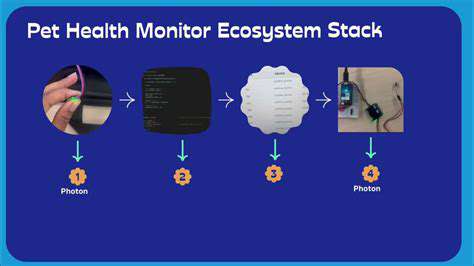
Understanding the Importance of Regular Checkups
Regular veterinary checkups are crucial for maintaining your pet's overall health and well-being. These appointments provide a vital opportunity for your veterinarian to assess your pet's physical condition, identify potential health issues early on, and provide preventative care. Early detection of problems often leads to more effective and less invasive treatment options. Preventive care like vaccinations and parasite prevention can also be discussed and implemented during these checkups.
Beyond the physical examination, these visits allow for a discussion of your pet's lifestyle, diet, and any behavioral changes you might have noticed. This comprehensive approach ensures your veterinarian has a complete picture of your pet's health, enabling them to provide tailored advice and recommendations.
Recognizing and Addressing Potential Health Issues
Changes in your pet's behavior or physical appearance can be early indicators of underlying health problems. For example, a sudden change in appetite, lethargy, or unusual vocalizations might be signs of discomfort or illness. Monitoring these subtle cues and reporting them to your veterinarian is essential for timely intervention.
Weight fluctuations, changes in coat condition, or difficulty breathing can all signify potential health issues. Regular monitoring and communication with your veterinarian are vital for catching these problems before they worsen. It's also important to be aware of breed-specific health concerns that might affect your pet.
Maintaining a Healthy Diet and Exercise Routine
A balanced diet tailored to your pet's specific needs is essential for maintaining their health and vitality. Proper nutrition plays a crucial role in supporting a strong immune system, healthy growth, and overall well-being. Consult your veterinarian to determine the appropriate diet for your pet's age, breed, and any underlying health conditions.
Regular exercise is equally important for maintaining a healthy weight and preventing obesity-related health issues. Appropriate exercise levels for each pet vary greatly depending on their breed, age, and physical condition. Your veterinarian can advise on suitable exercise routines and activities that are safe and effective for your pet.
Monitoring for External Factors and Environmental Hazards
Pay close attention to your pet's environment for potential hazards. Exposure to toxins, pollutants, or dangerous substances can have severe consequences for your pet's health. Ensure your home and yard are free of harmful substances and that your pet doesn't have access to potentially dangerous items.
Furthermore, consider potential environmental stressors that might negatively impact your pet's health. Changes in their environment, such as moving to a new home or experiencing loud noises, can lead to anxiety or stress. Understanding these external factors and proactively addressing them can significantly contribute to your pet's overall well-being.
Read more about Recognizing the Signs of Pet Illness: Early Detection
Hot Recommendations
- Customized Sleep Schedules: AI Driven for Sustainable Rest
- Crafting a Personalized Productivity Plan for Mental Clarity
- Sustainable Self Compassion: Cultivating Kindness Towards Your Mind
- Sustainable Productivity Hacks for the Busy Professional
- Sustainable Wellness for Parents: Balancing Family and Self Care
- Data Informed Self Care: Designing Your Personalized Wellness Strategy
- Sustainable Wellness for a Purpose Driven Life
- AI Assisted Mindfulness: Personalized Meditations for Deeper Practice
- Building Inclusive Mental Health Services: Key Initiatives
- AI Powered Self Care: Customizing Your Routine for Maximum Impact
